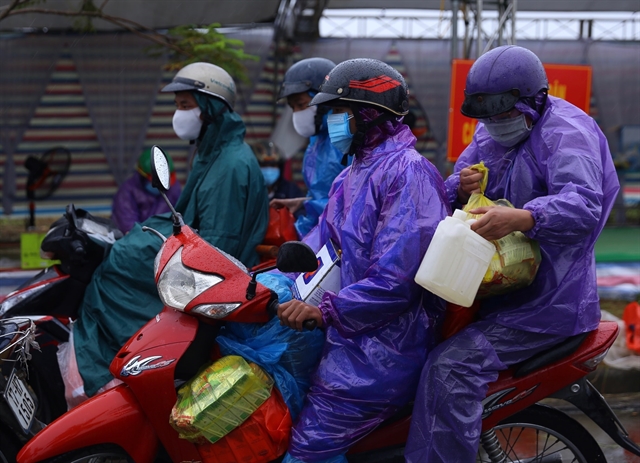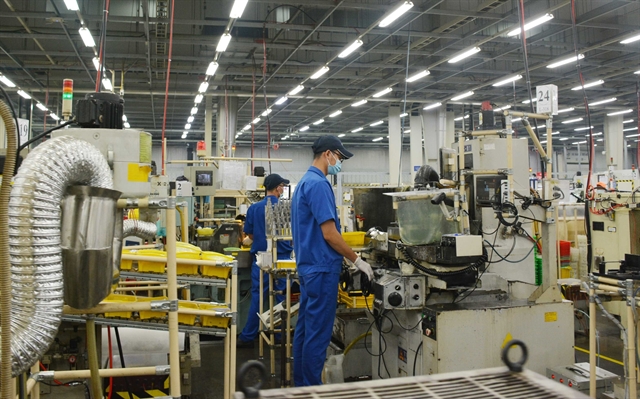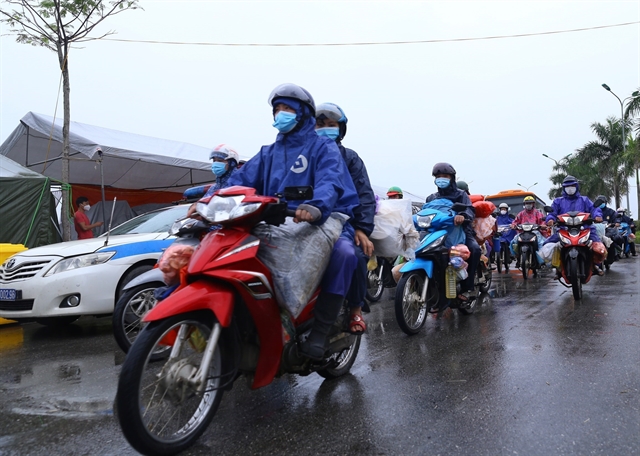 Economy
Economy

The exodus of migrant workers will cause severe labour shortage for HCM City and southern provinces.

|
| The exodus of migrant workers will cause severe labour shortage for HCM City and southern provinces. VNA/VNS Photo |
By Vân Nguyễn
Đặng Trọng Hà, 27 years old, from central province of Nghệ An, moved to southern Đồng Nai Province in April with the hope of finding a well-paid job.
He had no idea COVID-19 would strike the region and leave workers like him jobless and stuck at home for months.
After losing his job at a shoe company and spending nearly five months in Đồng Nai without any income and support, he set out for his hometown in Nghệ An Province, about 1,300km away, on motorbike, the longest motorbike trip he ever took.
“Sài Gòn is no longer the promised land for workers like me,” Hà said while he was staying at a quarantine facility in his hometown following his trip.
“For me, there will be no return to the southern region. After quarantine, I will return home, find a job in my hometown or in the Hà Nội area to earn money, learn a foreign language to make me more appealing to find a good job,” he said.
Hà was among around one million workers fleeing big cities and provinces due to COVID-19.
According to the General Statistics Office of Việt Nam, about 1.3 million labourers returned to their hometowns from July to September 15 due to COVID-19.
That figure does not include tens of thousands of people leaving host localities to head home since early October when Hồ Chí Minh City and some southern provinces eased travel restrictions.
Among the 930,000 people aged 15 and over that have returned to their hometown, about 34 per cent still have jobs, 38 per cent have been jobless or could not find employment under social distancing measures, while the rest did not dare go to work due to pandemic fears.
The exodus of migrant workers will cause severe labour shortage for HCM City and southern provinces.
According to a GSO report on the impacts of COVID-19 impacts on labour and employment in the third quarter of 2021, tens of thousands of businesses have been dissolved or suspended operations and many have operated at a moderate level with only 30-50 per cent of workers due to the social distancing measures in place.
The labour supply also decreased as workers returned to their home provinces for fear of the pandemic or had to be isolated, leading to a staff shortage in many enterprises, it said.
About 17.8 per cent of 22,764 surveyed businesses experienced a shortage of workers with the highest rate being recorded in the Southeast region at 30.6 per cent. In this region, provinces with severe labour shortages are Bình Dương (36.9 per cent), Bình Phước (34.4 per cent) and HCM City (31.8 per cent), according to the GSO.

|
| Workers at Linh Trung Industrial Zone in Hồ Chí Minh City on October 1, the first day the city eased COVID-19 restrictions. VNA/VNS Photo |
Industries that experienced the most severe labour shortages include electronics, computer and optical products manufacturing, leather and related products as well as apparel manufacturing, said the office.
Chu Tiến Dũng, head of the Hồ Chí Minh City Union of Business Association (HUBA) told Việt Nam News: “A great number of workers moving out of the city has a big impact on businesses’ efforts to recover their production activities.”
He cited a recent survey conducted by HUBA that revealed about 85 per cent of businesses in HCM City’s industrial parks and export processing zones have reopened and only 60 per cent of the employees in these companies are back in work.
For businesses outside these zones, the rate of enterprises resuming is only 25 per cent with less than 50 per cent employees return to work, he said.
“Those which haven’t resumed either haven’t been allowed to reopen or are unable to reopen due to lack of resources which include labour,” Dũng said.
The chairman of the union said high-tech industrial zones employ highly qualified workers and offer them a relatively good salary, therefore they have a stable life and these businesses are less affected in terms of labour when they recover post-pandemic.
For enterprises in industrial parks and export processing zones, the skills of employees are average. About 40 per cent of employees of these enterprises are unlikely to return to work or it will take them a certain time period of time to come back.
Meanwhile, Dũng said, businesses located outside these zones will suffer severe shortage of labourers as the low-skilled or manual labourers they employ could not stand the difficulties and challenges posed by this wave of the pandemic and had to return to their hometown by all means.

|
| More than a million labourers returned to their hometowns due to COVID-19. VNA/VNS Photo |
The fourth wave of COVID-19 left many in a desperate situation and this has had a more severe impact on employees than any previous outbreaks.
The report of the GSO said that people in the Southeast region and Mekong River Delta were the most hard hit.
The rates of workers in these two regions who said their jobs had been negatively impacted by the pandemic are the highest, at 59.1 per cent and 44.7 per cent, respectively, compared to much lower level of the Northern Midlands and Mountains region at 17.4 percent, according to the office.
Workers in these two regions also experienced the biggest drop in earnings. Workers in Southeast region and Mekong River Delta earned VNĐ5.7 million and 4.5 million, down 29.8 per cent and 16.1 per cent compared to the previous quarter respectively.
Recommendations to have workers return to work
Dũng said each enterprise will have their own plan to encourage workers to return to work, yet it is crucial to well inform them about the recovery plan of the company as well as the pandemic situation in the city.
“Businesses should also consider a support package for a period of three to six months so workers can return to work and have a stable life,” he said.
“Businesses need to have specific plans about their production progress because recovery takes time, the preparation is not only about labour but also customers, market, supply chain and capital, among others.
“HCM City has more than 200 employment centres and several vocational training schools. Businesses can cooperate with these schools to conduct training so employees can work in these businesses right after they finish the studies.”
Meanwhile the Government should facilitate interprovincial travels to make it easy for employees return to host localities to work, he added.
The chairman of the business union said that restructuring the city’s economy is crucial.
Dũng said: “This is an opportunity for the city to restructure the economy. It shouldn’t be driven by cheap labour. This transformation will take time but due to pressure caused by COVID-19, I think, many businesses will fasten their transformation.
“More social housing is also needed so employees can rent or buy houses at an affordable price to settle down their lives. Many workers lived in narrow rented rooms with poor living space that made them fail to meet the pandemic prevention and control measures.” — VNS




